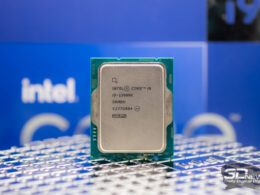The distinguishing feature of DisplayPort 2.1 is that it possesses a bandwidth of 80 Gbps in the UHBR20 version, making it the world’s only convenient standard supporting 4K monitors at 240 Hz without Display Stream Compression(DSC). However, the provision of this service comes with the short length of the cable which significantly impedes the widespread adoption of the standard among consumers and manufacturers.
Restrictions on Cable Length
The maximum length of a cable currently certified as DP80 (UHBR20) is not more than 1.2 m according to the VESA database. Many of these cables in practical scenarios measure 1 m or 80 cm. However, users often require cables around 2 m in length which would be sufficient to allow a computer unit to be on the floor while the monitor sits on a table. The 1 m cables sometimes necessitate placing the computer unit on the table alongside the monitor. The latter scenario presents a significant problem for users intending to leverage the benefits of the UHBR20 specification, considering the limited range of equipment currently supporting it.
Equipment Limitations
A prime example is the AMD Radeon Pro W7900 professional video card which features one DP80 (DisplayPort 2.1 UHBR20) port with the rest featuring DP54 (DisplayPort 2.1 UHBR13.5). Owing to this, monitors supporting DP80 are also limited. Whilst technically VESA does not limit DP80 cables to 1.2m in length, manufacturers are currently unable to produce a longer cable. The experience with DisplayPort 1.4a showed that exceeding the practical maximum length during an attempt to achieve high speed results in a compromised signal.
Branding and Compatibility Issues
The DisplayPort 2.1 standard is fragmented into several specific specifications. Among these is the DisplayPort 2.1 UHBR20 mode, the only specification that reaches a bandwidth maximum of 80 Gbps, also known as DP80. UHBR 13.5 (DP54) and UHBR10 (DP40) offer significantly reduced bandwidths i.e., 54 and 40 Gbps respectively. However, all three specifications fall under the single name DisplayPort 2.1. Numerous cables on sale claim DisplayPort 2.1 compatibility, although the actual certification for DP40 or DP80 is missing.
In essence, this means that the practical capabilities of DisplayPort 2.1 cables and device hardware can greatly vary depending on the specification. For instance, an OLED monitor with a resolution of 4K, a refresh rate of 240Hz and a DisplayPort 2.1 port may only offer its maximum resolution and refresh rate with DSC enabled. This lowers bandwidth requirements and provides a speed increase of up to one third. While DSC activation may not always represent an undesirable solution, such as for achieving 4K at 240Hz through DisplayPort 1.4, it is not a cure-all. Enabling DSC on Nvidia cards deactivates DSR support for instance. This potential source of confusion among consumers might explain the slow roll-out of DisplayPort 2.1 since the DP40 and DP54 specifications allow for its implementation without achieving maximum speeds.





